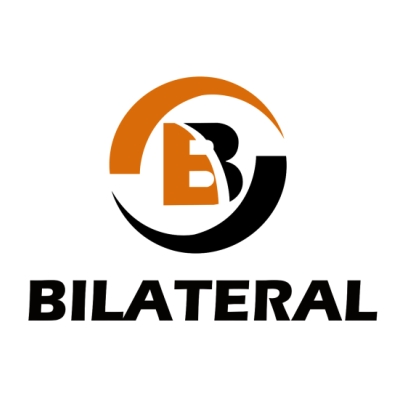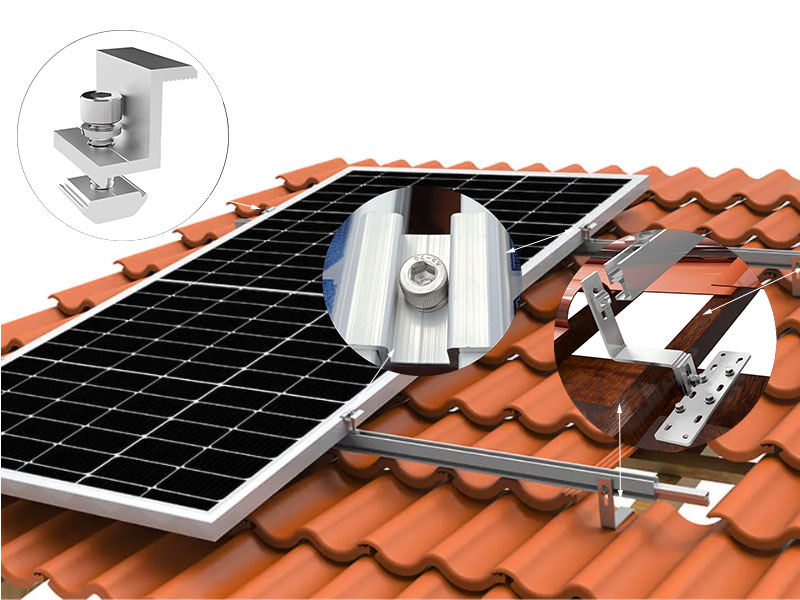Introduction
Selecting the right solar mounting system is crucial for efficiency, safety, and long-term durability. Roof type—flat or pitched—affects the choice of mounting method, roof penetration, wind resistance, and maintenance. This guide consolidates the latest best practices for both flat roofs and pitched roofs, helping you choose the ideal solution for your solar project.
Flat Roof Solar Mounting Systems (Slope ≤ 5°)
Flat roofs are common in commercial and industrial buildings. The installation method usually depends on structural strength, wind load requirements, and roof waterproofing.
1. Penetrative Type
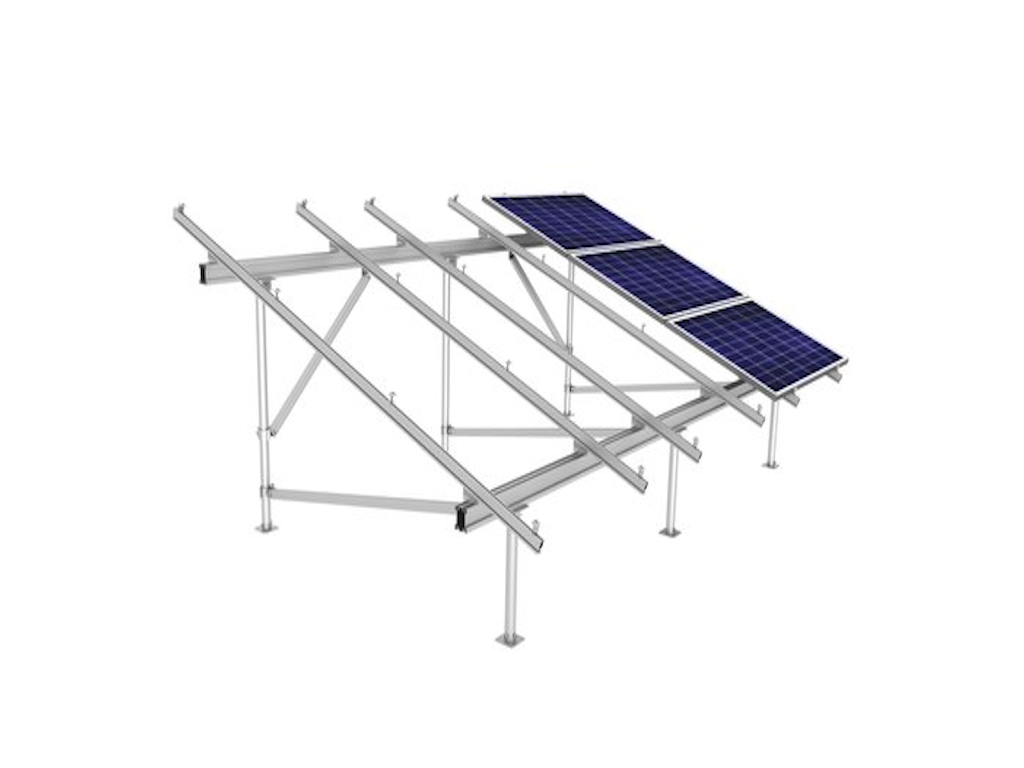
Description: Mounting bases are fixed directly to the roof structure, typically with stainless steel hanger bolts or screws.
Pros: Excellent stability, suitable for areas with strong wind.
Cons: Requires roof penetration; careful sealing is necessary to avoid leaks.
Best Use: Industrial buildings where structural support is strong and wind loads are significant.
2. Ballasted Type
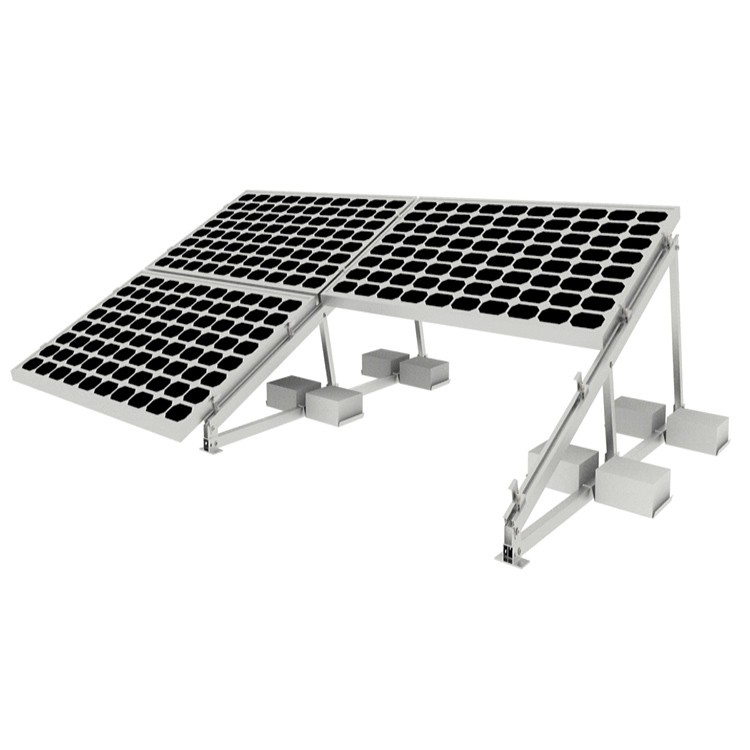
Description: Panels are held in place by concrete blocks or heavy ballast, avoiding roof penetration.
Pros: Non-invasive, easier to install, good for lightweight roofs.
Cons: Increases roof load; may need additional structural assessment.
Best Use: Commercial rooftops with low wind exposure and strong surface area.
3. Hybrid Type
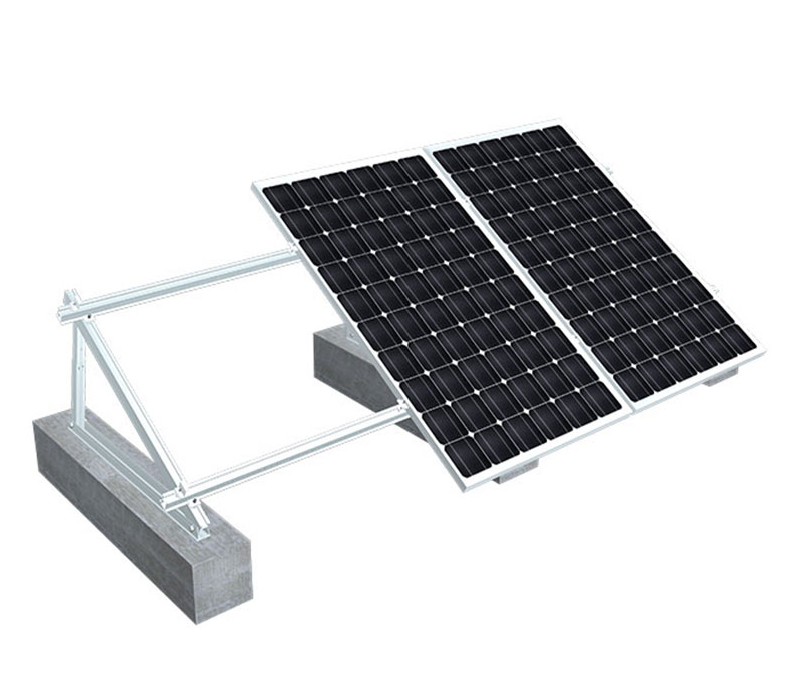
Description: Combines ballast and penetrative methods to optimize load distribution and wind resistance.
Pros: Balances roof load, improves wind resistance.
Cons: Slightly more complex installation.
Best Use: Areas with moderate-to-high wind exposure where a compromise between penetration and ballast is needed.
Installation Note: Flat roof systems often include adjustable tilt frames (10°–30°) to improve solar energy capture.
Pitched Roof Solar Mounting Systems (Slope 5°–45°)
Pitched roofs are widely used in residential buildings. The mounting system must match the roof material to ensure secure attachment without damaging the roof.
1. Glazed Tile Roofs
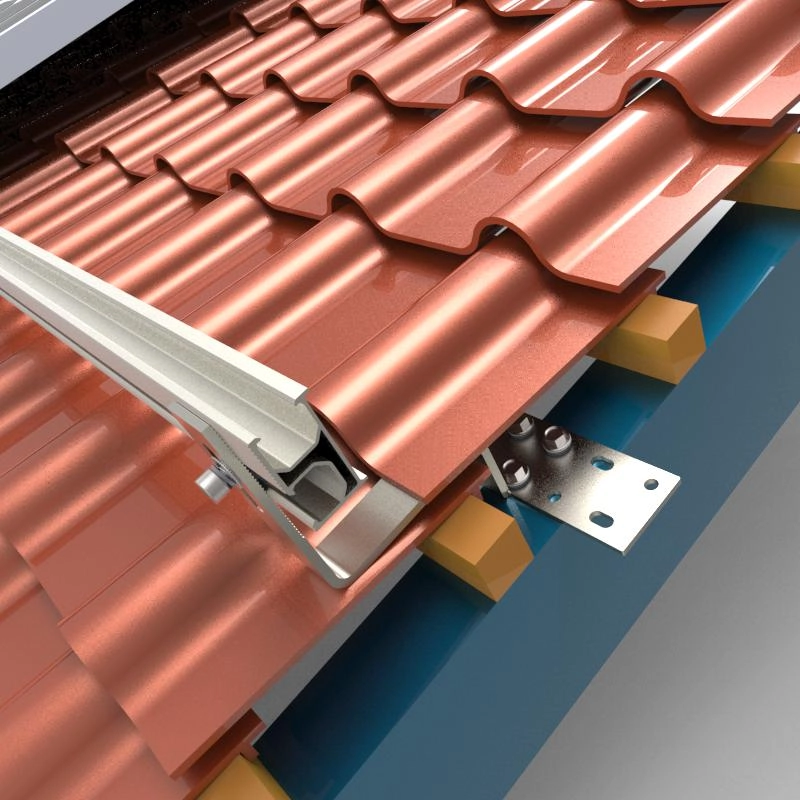
Mounting Method: Roof hooks fixed beneath tiles; sometimes reinforced with hanger bolts.
Pros: Provides strong support without breaking tiles if installed correctly.
Cons: Requires careful waterproofing around hooks.
Best Use: Residential homes with glazed tile roofs.
2. Cement Tile Roofs
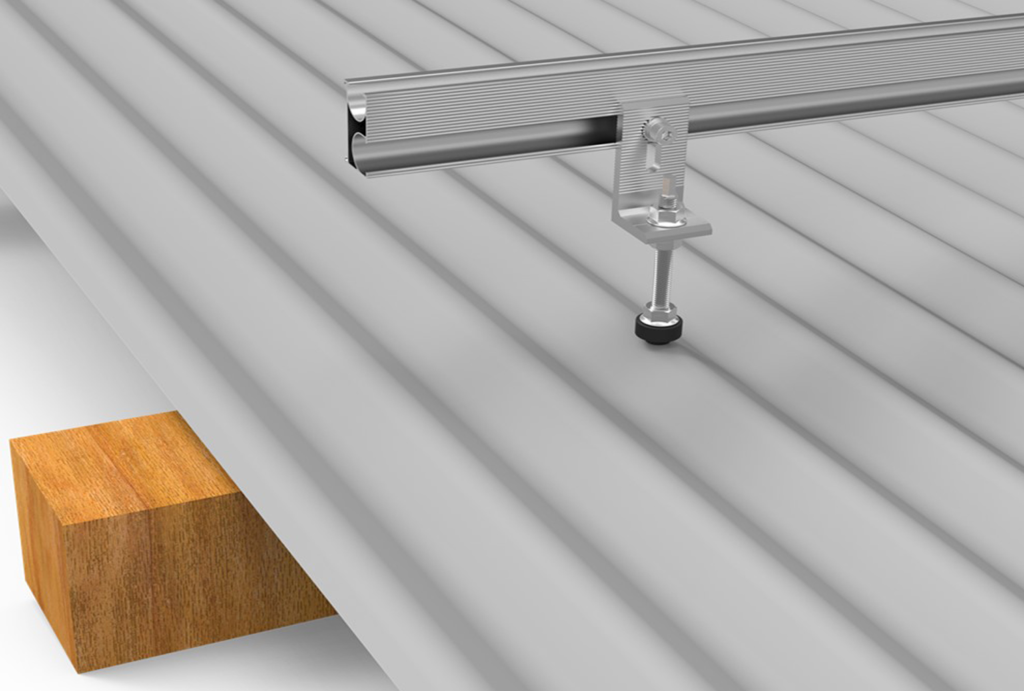
Mounting Method: Roof hooks or penetrative screws are used to secure the tile into the roof structure.
Pros: Secure and long-lasting; suitable for moderate slopes.
Cons: Tile breakage risk if not handled carefully; sealing required.
Best Use: Houses with concrete tile roofs, slopes between 10° and 35°.
3. Color Steel Roofs
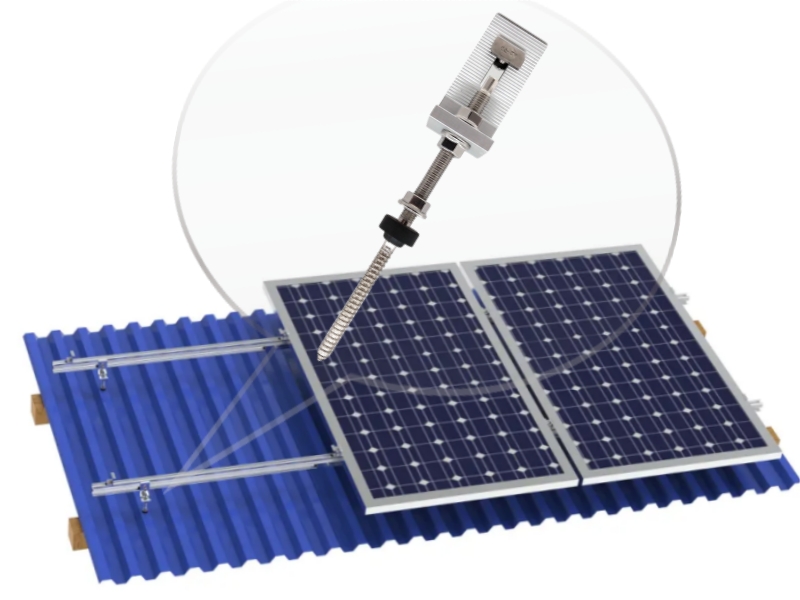
Mounting Method: Solar hanger bolts or standing seam clamps without penetration for seam roofs.
Pros: Fast installation, minimal roof damage.
Cons: Limited to specific steel thickness; may require anti-corrosion washers.
Best Use: Industrial or commercial buildings with metal roofs, slopes 5°–45°.
Installation Note: Pitched roof systems typically install panels flush with roof slope; ensure proper spacing from the roof surface to allow airflow and avoid overheating.
Recommended Solutions
| Roof Type | Recommended System | Key Considerations | Best Use |
| Flat Roof | Penetrative / Ballasted / Hybrid | Tilt frame 10°–30°, roof load assessment, waterproofing | Industrial/commercial roofs |
| Pitched Roof – Glazed Tile | Roof hooks / Hanger bolts | Avoid tile breakage, seal penetrations | Residential homes |
| Pitched Roof – Concrete Tile | Roof hooks / Penetrative screws | Proper spacing, sealing, moderate slope 10°–35° | Residential homes |
| Pitched Roof – Metal | Hanger bolts / Standing seam clamps | Anti-corrosion washers, roof compatibility | Industrial / commercial roofs |
Conclusion
Both flat roof and pitched roof solar mounting systems require careful selection based on slope, roof material, wind exposure, and structural strength.
Flat roofs (≤ 5°) → Best suited for commercial/industrial buildings with scalable solutions.
Pitched roofs (5°–45°) → Residential and small-scale commercial buildings; system choice depends on roof material (glazed tile, concrete tile, or metal).
Proper selection ensures maximum energy output, long-term stability, and minimal maintenance.
About us
Focus on the solar mounting system for 15 years
Suzhou Bilateral specializes in the R&D and manufacturing of high-quality solar panel mounting structures, offering one-stop solutions and accessories for both rooftop and ground-mounted photovoltaic systems.
We are committed to delivering products that are safe, durable, and easy to install.
With business operations spanning multiple countries worldwide, our products combine innovative design, exceptional strength, and proven reliability. Backed by a complete product range and a professional technical team, Suzhou Bilateral is the ideal partner for solar system integrators, distributors, and installers.
Explore our website to discover how we can support your projects with efficiency and quality.
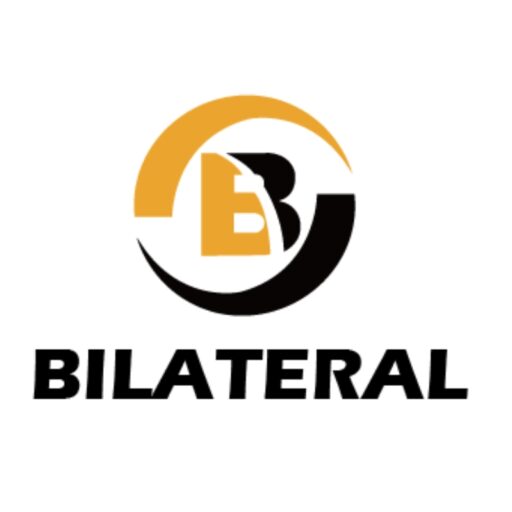
Contact Information
Phone/Whatsapp: +86-13451556833
Email: sales@szbilateral.com
